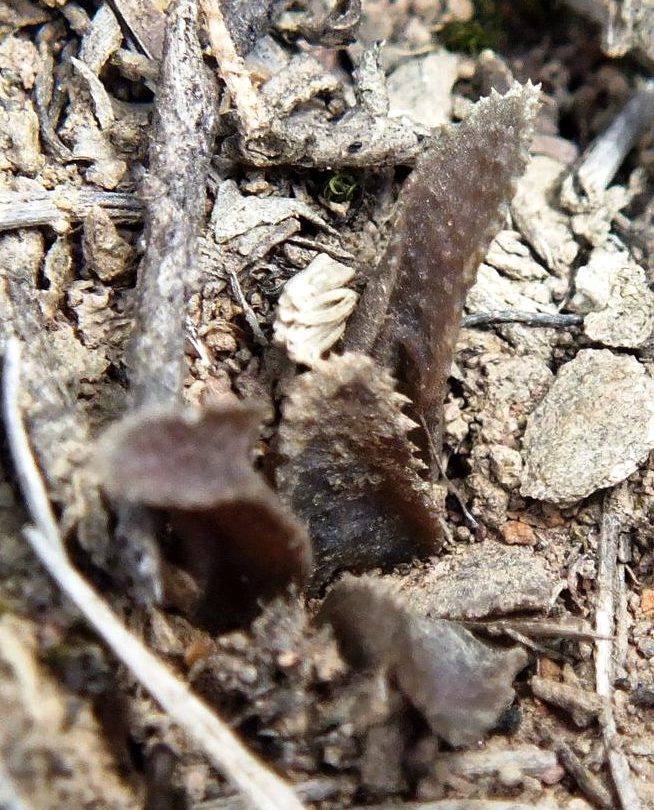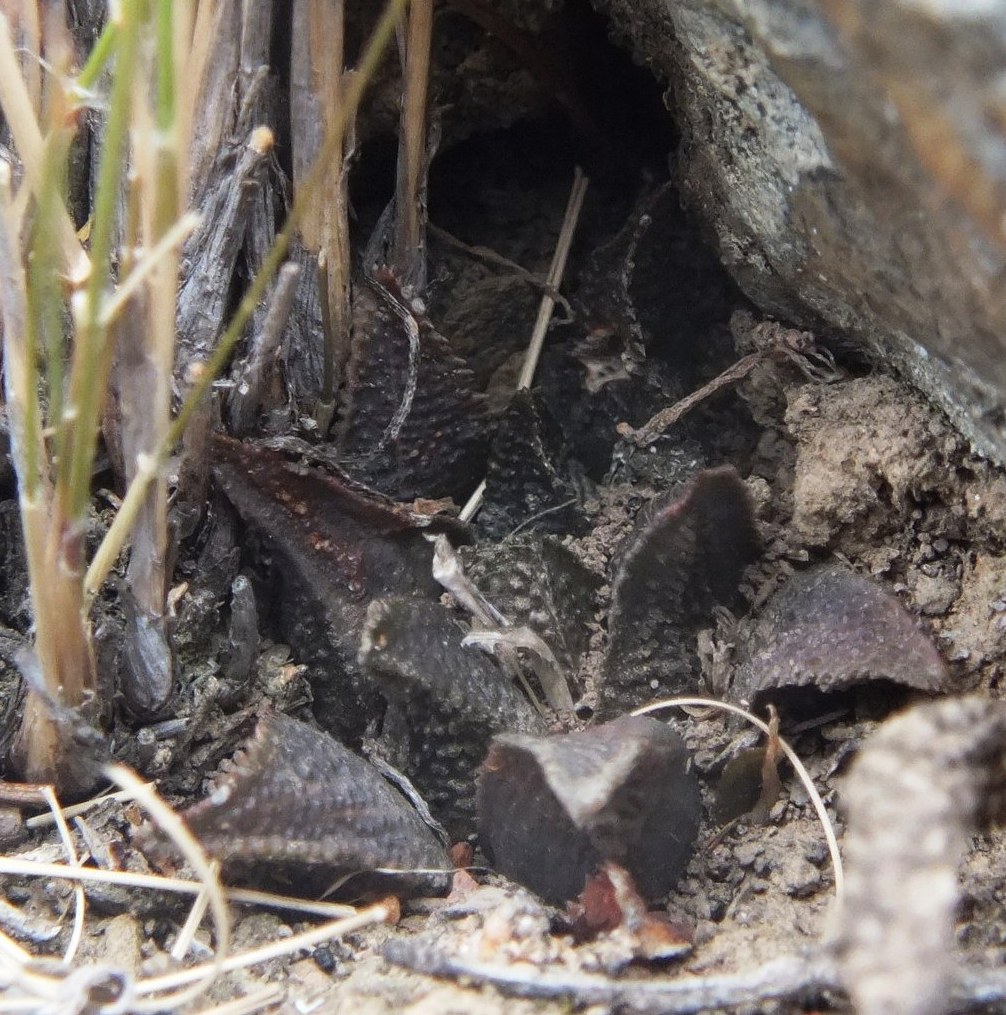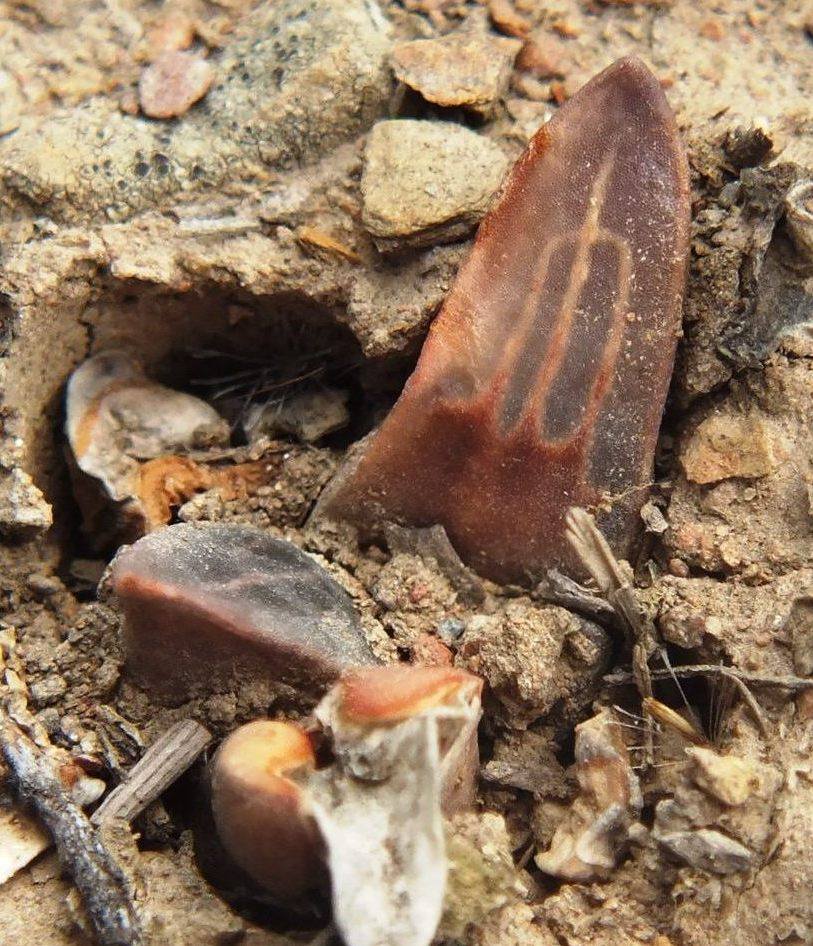73. 2019.8.6, MBB7944 – It would be truly interesting and instructive to now go southwards and see what happens with variegata, floribunda, and mirabilis, but there are other very significant twists. So lets go to the western boundary of the mutica distributions. A little west and north from Bredasdorp are three populations of H. rossouwi where one would expect to find either mirabilis or mutica. Weird, and it does get weirder still. I wish my staunch opposition will consider exploring the significance of the similarity of rossouwii to emelyae multifolia or to some of the mirabiloids. Then a bit further north still are six populations (known to me) of H. mutica and two of mirabilis. But there are many off-road isolated small patches of uncultivated land that will house Haworthia. Just as a matter of vital interest are the two mirabiloids. They are about 200m (MBB7944a) apart but one (MBB7944b) is contiguous with mutica MBB7943). While the mirabiloids are best treated separately, this exercise is about the affinities with the retusoids and muticoids. So let’s just look at 7944a without getting further misled by names such as maraisii, magnifica and a dozen or more others that are the product of intellectual obduracy or laziness, or need for something simpler than a purely botanical solution.
With gentle humour. We can now carry on collecting bits of information like a baboon raiding a mielie (corn) field dropping cobs as fast as they are picked, or try to hold it all in memory and form a greater picture. Please don’t think I am demeaning anyone or animal by the baboon metaphor – I am just expressing how difficult I find it to remember and relate all the populations and their variants to each other while trying to form a reasonably complete picture.
I numbered 7944 as a and b because they are only about 200m apart. 7944b H. mirabilis is contiguous with 7943 H. mutica (to follow), separated in an identical habitat by a shallow eroded depression about 5m wide. What is significant? Do those plants show “hybridism” and floribunda characteristics? Additionally how do you deal with this in the mainstream science arena? Geology would be easy as it is just a straightforward identical Bokkeveld shale series. Vegetation? A detailed Braun Blanquet survey would no doubt reveal difference except that at a Council of Scientific & Industrial Research (CSIR) Congress on Karoo habitats in ca 1984 (Prince Albert) it was agreed that BB was inadequate in arid sparsely vegetated systems on a variable skeletal substrate. If BB was adequate, just think of the time needed to describe and record enough Haworthia habitats to generate a result? By the time the 10th habitat was annotated, the first would be different. Where would you find replication anyway? I am sure you could describe leaf anatomy, shape, form and texture for x number of plants in mind-dazzling language. Would that be better than these pictures? Incidentally, this kind of contiguous occurrence is also evident at two localities east of Riversdale where there is “hybridism” of retusa and floribunda, and again of retusa and mirabilis. Totally different substrates that might be very difficult to identify at a map scale of 1:50 000.
74. 2019.8.7, MBB7943 – All that DK stuff is just a distraction from the actual issue that is of just exploring a classification hypothesis. It is really only my opinion based on my experience and my DK profile. There are some serious issues that I cannot resolve and my conviction is that they are not solvable in the climate of materialism. While there seem to be gross continuities like I have been harping on as well as that of the cooperoids, cymbiformoids and more, there are single population oddities that I cannot fit e.g. elizeae, calcarea, truteri, marxii and also more. There will be another revision sometime in the future by someone else that will bring nomenclature changes based on real problems of typification and IBN deviations. These will be implemented with a different opinion of the species hopefully based on better sequencing and its interpretation. Wildly hopeful is that it will somehow accord with my definition of “species”.
Note the two plants with flower spikes. It was March and mutica is a spring flowerer – mirabilis late summer. One plant has a healthy peduncle. I have discussed this before and explained that despite this 4-8 month time gap cross-breeding does occur. No one took up the point re aloes and the question of germination and successful reseeding as rare events.
Jakub has done some great exploration and this is an area too that he pointed me to, mid-Nov, same general area. One plant was a monster at 16cm diameter.






















































